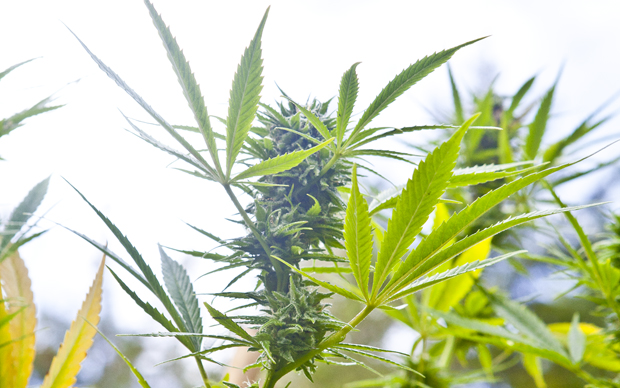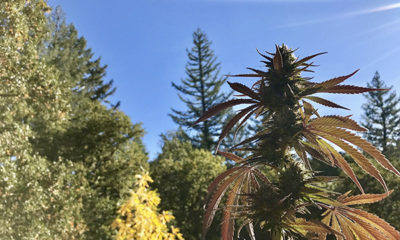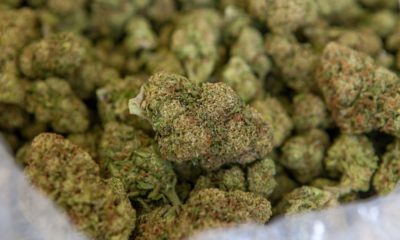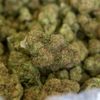
Joint Opinions
Legal Marijuana: Regulatory Models Matter
Cannabis quality in the average Denver adult-use dispensary is usually far below the quality found in the average California storefront. Try something from a legal shop on the Western Slope and the price rises as quality drops. It’s not to say that there isn’t good product in America’s first legal marijuana state — there is plenty of great bud there — but most of it just doesn’t compare to what is on the shelves in California, a region still renowned for producing the highest quality cannabis in the world. Is it because there are better growers in the Golden State? Maybe, but the quality of the bud is more likely a result of the regulations through which it is produced and distributed. Free market advocates, listen up.
California isn’t only the birthplace of the industry, it’s also as close to a free market for supply as any industry in this nation gets. With almost two decades of legal sales, the biggest threat in the Golden State remains the ambiguity of the law and selective enforcement of it by regional law enforcement. By choosing to not regulate medical marijuana, California has allowed production and supply to proliferate free of regulatory interference, leading to the legal availability of some of the highest quality cannabis in the world.
Cities such as San Francisco, Oakland and Berkeley regulated dispensaries early on and even lobbed 7 to 10 percent taxes onto not-for-profit sales. Other regions, such as Los Angeles, created no regulation whatsoever (until recently) and the more conservative parts of the state banned storefronts outright. California is a patchwork of loose regulations, with no centrally state-run medical cannabis program.
When Proposition 215 passed in California in 1996, it legalized the use of marijuana for patients with any medical need. Patients qualify for medical cannabis recommendations for any reason a doctor — not a politician — sees fit. Doctors charge a once annual fee between $35 and $250 to write cannabis recommendations; prices are usually determined by the concentration of doctors in a region writing recommendations and the level of involvement the doctor will have with the patient. Cannabis still cannot be officially prescribed in any state because it’s a Schedule I Controlled Substance considered by the federal government to have no accepted medical use.
With a recommendation, the patient has options. Some patients will choose to post their recommendation and grow their own. Patients can grow between 6 to 99 plants depending on local regulations, if they exist. If a patient doesn’t have the ability or desire to grow her own, she can designate a grower as her caregiver. One grower may grow for multiple patients.
This system evolved into storefront dispensaries, in cities and counties that permitted them, where the same general concept applies. Patients become members of collectives, often with storefronts or delivery services, and are able to obtain their medicine through the collective. There’s no restriction on the amount of collectives a patient can join. Under California’s SB 420, storefronts can compensate collective growers for their overhead and patients make donations to the non-profit dispensary for medicine.
California has long been the largest cannabis-producing state in the nation. The cultivation business is the largest industry in the northern parts of the state and it spans generations through many families. With few to no regulations many growers opt to take their product out of state where risk commands much higher prices. Marijuana produced illegally for export in California isn’t tracked in any way by the state or federal government and no taxes are paid on it. This lush black market also helps drive down the price of high-quality dispensary buds. For risk-averse growers producing consistently high-quality cannabis, it’s still financially viable and preferable to sell product through a legal storefront because living as an outlaw doesn’t reliably pay a working person’s obligations.
Professional growers and manufacturers serving both the legal and black markets operate at all sizes and produce a wide range of quality and consistency. With a glut of producers, prices are driven down and higher-quality products compete for shelf-space. Mom-and-pops making a good product have just as much a chance to survive in the legal medical market as the well-funded and professionally run big cannabusinesses because patient demand entirely dictates what the dispensaries put on their shelves.
Dispensaries employ connoisseurs to sort through product brought in by independent and unregulated producers. Because they evaluate so much cannabis, they are able to select the highest quality product at a pre-tax price the legal market will bear. In places like the San Francisco Bay Area, the free-ness of this market has also dictated its safety. Although most places have no regulations on lab-testing for potency and safety, the bulk of producers must test their medicine to even be considered for shelf placement in any reputable dispensary. Lab testing evolved in the Bay Area in response to patient demand, and has since been worked into the regulatory schemes of legal programs in other states.
Lack of regulation has also caused a wave of innovation across all aspects of cannabis production. Unrestrained by law, growers experiment with all styles of growing and new products to improve yield and quality are constantly invented. The hydroponics industry has boomed, with a wealth of new companies competing to create the best products to produce the best cannabis.
Proponents of free market economies can look to California’s medical market and point to the innovation and quality standards it dictates as evidence of their beliefs. But, the reality is California’s law (and all medical marijuana laws) is in direct conflict with federal policy, meaning it isn’t quite free of legal interference, particularly asset seizure.
Ambiguity in law means ambiguity in enforcement and the feds point to California’s lack of a statewide medical program as reason to continue raids. Further, while urban markets like the Bay Area benefit from a lack of regulation, other regions suffer from it. In the marijuana deserts inland and on the central coast, it’s more difficult to find quality lab-tested medicine.
California was the first state to legalize medical use and has the largest legal-ish cannabis market in the nation. A couple states away in Colorado, the first legal adult use marijuana market now exists alongside a state-regulated medical cannabis program. While California is still plagued by DEA raids, Colorado’s legal markets are being mostly tolerated by the federal government. The Colorado market is producing the first national cannabis brands with major financial backing and influencing legalization measures in other regions.
Unlike California, Colorado designated government agencies to create guidelines for a system both for medical and recreational use. Also unlike California, Colorado dispensaries were licensed and able to operate for-profit. In 2013, the US Department of Justice outlined eight federal enforcement priorities for legal marijuana sales, including keeping legal marijuana from crossing state lines and out of the hands of minors.
Oftentimes Colorado dispensaries are in one building but have two separate entrances or rooms to distinguish medical cannabis “red card” holders from 21-and-up recreational customers. Taxes are much higher on recreational marijuana, making it cost prohibitive for tourists and smugglers to bring large quantities out of state. Additionally, cannabis is tracked seed-to-sale, making it near impossible that a business would export any of its legally-produced cannabis and move product between medical and recreational storefronts.
A big contributor to the quality difference between licensed and regulated shops in Colorado versus California is the 70/30 rule, which required a dispensary be vertically integrated to produce 70 percent of its own product. Quality varies drastically from dispensary to dispensary, depending on the expertise of the in-house grower. Although the rule officially ended October 1, manufacturers must be licensed by the state to participate in the legal market. With crops taking an average of three months to turn over, quality in recreational shops is set to shift slightly in the spring.
Since legal adult-use sales began, the other 30 percent of product was provided by licensed manufacturers, specifically those with a Marijuana Infused Products (MIPs) license. MIPs produce name brand hash concentrates, sodas, edibles, topical ointments and other extractions now recognizable by anyone who lives in or has visited the Centennial State in the last year with an interest in legal marijuana. These legitimized cannabusinesses have attracted international press and generated capitalism-fueled excitement about the prospects of a legalized national market.
Regulations in Colorado have largely protected its market from federal interference and allowed it to produce the sort of paradigm-shifting headlines it has been producing about a booming economy and medical miracles. As legal cannabis goes national, will quality for consumers suffer at the hands of regulatory schemes designed to strictly control the market? And, is that the priority? That’s for voters to decide. Regulatory models matter.
Does your state have a medical marijuana program? Tell us about it in the comments.






















